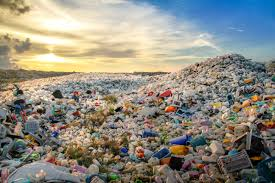As the global plastic waste crisis escalates, innovative solutions are crucial to reducing its environmental impact. Governments, organizations, and individuals are exploring creative ways to tackle plastic pollution. Here are some of the most promising and innovative solutions for reducing plastic waste:
1. Biodegradable and Compostable Plastics
- Biodegradable Plastics: These plastics break down naturally by microorganisms into water, carbon dioxide, and biomass, reducing their long-term environmental impact. They are typically made from plant-based materials like corn starch or sugarcane.
- Compostable Plastics: These materials decompose under specific conditions into non-toxic, natural components, and can be composted in industrial facilities. Innovations like PLA (Polylactic Acid) and PHA (Polyhydroxyalkanoates) are gaining traction for packaging and single-use items.
Challenges: The challenge lies in creating the infrastructure to manage composting and ensuring that these materials truly degrade in natural environments.
2. Plastic Alternatives from Natural Materials
- Plant-Based Packaging: Innovations in packaging are focusing on replacing plastic with materials derived from natural resources. Seaweed-based packaging and mushroom packaging are biodegradable alternatives that decompose without leaving toxic residues.
- Edible Cutlery and Packaging: Some companies are developing edible alternatives to traditional plastic packaging and utensils. Products like edible plates, cups, and even spoons are being introduced, which reduce waste and provide an eco-friendly solution.
Example: Companies like Notpla are creating seaweed-based packaging for food and drink, which is biodegradable and even edible.
3. Circular Economy and Recycling Innovations
- Plastic-to-Plastic Recycling: Traditional recycling methods often degrade plastic quality, but new technologies like chemical recycling break down plastics into their molecular components, allowing for the production of high-quality, virgin-like plastics from waste. This process increases the recyclability of previously hard-to-recycle plastics like mixed polymers.
- Waste-to-Energy Conversion: Some technologies focus on converting plastic waste into usable energy. Through pyrolysis and other processes, plastics are broken down into fuels or raw materials that can be used to generate electricity or produce new products.
Example: Companies like Loop Industries are developing methods to chemically recycle PET plastics (used in water bottles) into virgin-quality material.
4. Plastic Collection and Ocean Cleanup Technologies
- Ocean Cleanup Projects: Initiatives like The Ocean Cleanup aim to reduce marine plastic pollution by deploying large systems to collect and remove plastic waste from oceans. This technology works by capturing plastic debris through passive systems that float in ocean currents.
- Trash-Eating Robots and Drones: Robotics and AI are being used to clean up water bodies by deploying trash-collecting machines that can roam rivers, lakes, and oceans to remove plastic waste.
Example: WasteShark is an aquatic drone designed to roam waterways and collect floating plastic debris before it reaches the ocean.
5. Refill and Reuse Systems
- Refillable Packaging: Several companies are introducing refillable packaging systems where consumers can refill their products at designated stations instead of buying new plastic containers. These systems help reduce single-use plastic packaging in industries like personal care and cleaning products.
- Reusable Containers: Some grocery stores and brands are promoting reusable containers for shopping. For example, initiatives like Loop by TerraCycle partner with brands to sell products in reusable containers that are returned, cleaned, and refilled.
Example: Algramo, a Chilean company, allows consumers to refill household products like detergents using dispensers to reduce plastic waste.
6. Advanced Recycling Programs
- Deposit Return Schemes (DRS): These schemes encourage consumers to return plastic bottles and containers for a small refund, incentivizing recycling and reducing littering. Countries with DRS programs see significantly higher recycling rates.
- Plastic Credits: Similar to carbon credits, some companies are offering plastic credits, where organizations can offset their plastic use by funding or participating in projects that collect and recycle plastic waste, ensuring a net-zero impact.
7. Plastic-Free Supermarkets
- Plastic-Free Aisles and Packaging: In response to the growing demand for sustainable shopping, several supermarkets are introducing plastic-free aisles and packaging alternatives. These stores offer products in bulk, without the need for single-use plastic packaging.
Example: Supermarkets in the Netherlands, such as Ekoplaza, have introduced the world’s first plastic-free supermarket aisle, with all products packaged in compostable or reusable materials.
8. Government Policies and Corporate Initiatives
- Plastic Bans and Restrictions: Many countries and regions are imposing bans on single-use plastics, such as plastic bags, straws, and cutlery. Governments are also introducing policies that hold producers responsible for the life cycle of their plastic products, encouraging them to adopt more sustainable materials.
- Corporate Responsibility: Companies like Unilever and Nestlé are pledging to reduce their plastic footprints by investing in sustainable packaging and supporting recycling programs. Some companies are shifting toward zero-waste packaging to minimize their environmental impact.
Example: Unilever has committed to reducing its use of virgin plastic by 50% by 2025.
9. Microplastic Filters and Wastewater Solutions
- Microplastic Filtration: Washing clothes and industrial processes release millions of microplastics into the environment. Companies are developing filters for washing machines and wastewater treatment plants to capture these microplastics before they enter rivers and oceans.
Example: The Cora Ball is a laundry ball that catches microfibers released from clothes during washing, preventing them from entering waterways.
10. Public Awareness and Behavioral Change Campaigns
- Education and Awareness: Public campaigns aimed at raising awareness about plastic waste are crucial in changing consumer behavior. By educating people about the environmental impact of plastic and encouraging the use of reusable products, individuals can play a significant role in reducing waste.
- Plastic-Free Challenges: Movements like Plastic-Free July encourage people to minimize their plastic consumption for a month, fostering habits that reduce reliance on single-use plastics.
These innovative solutions reflect the growing global effort to reduce plastic waste and protect the environment. By combining technological advancements, policy measures, and behavioral changes, society can work toward a more sustainable future with less plastic pollution.



